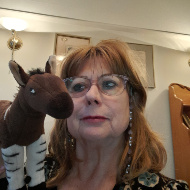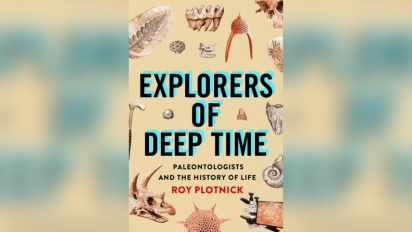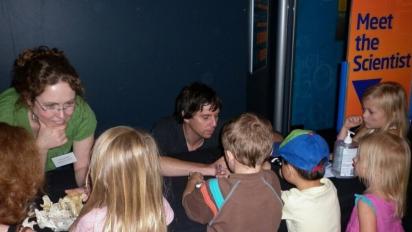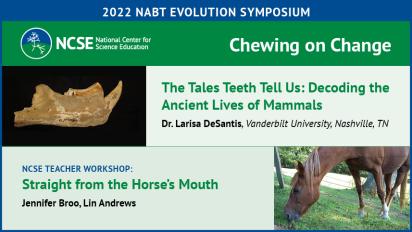[Review] Explorers of Deep Time: Paleontologists and the History of Life
A "sense of fun, wonder, and a life in science well-spent pervades the book," according to our reviewer, vertebrate paleontologist Christine Janis.
Explorers of Deep Time is an informative, entertaining, and charming book by Roy Plotnick, a doyen of North American paleontology. The book explains and reveals the practice of paleontology — a multidimensional and eclectic discipline, far from the archaic popular notion of just fossil collecting — and introduces many of today’s paleontologists, around half of whom featured here are women.
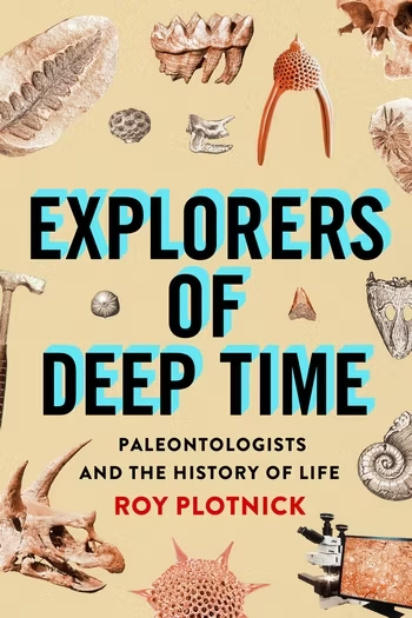
There are a lot of personal stories in this book, but no ego parading: as Plotnick titles one of his chapters, “I’m Not Ross (or Indiana Jones).” In his recounting, Plotnick not only covers paleontology’s current successes but also provides a glimpse into how much the science has changed over the past half century: “Paleontologists have more fun than other scientists!” This sense of fun, wonder, and a life in science well-spent pervades the book, which is in general well-written and easy to read.
The book is divided into four sections. Section I, “Deep Time,” provides a broad overview of the nature and importance of paleontology today. Only paleontology can pose the “best questions” as to what has happened over the course of Earth’s history. Also considered are the different types of scientific disciplines involving paleontology (geobiology, molecular paleontology, etc.), and the opportunities for paleontological employment today (which include museums and government agencies as well as academic departments).
Section II, “Exploring Deep Time,” showcases the discipline of paleontology today and discusses how things have changed over the past half cen- tury. We are told about the joys of fieldwork (and the contribution of new inventions like GPS), and the importance of museums for both educating the public and providing scientific resources for researchers. We then discover how the tools of paleontology have changed from a field hammer and a pair of calipers to today’s panoply of high-tech equipment for visualizing materials and statistical techniques for analyzing data. The “Paleobiological Revolution” of the late twentieth century is described, with the advent of online databases and personal computers to access them and analyze data. A consideration of the “Big Five” extinctions in Earth’s history concludes with the importance of the new field of conservation paleontology in helping prevent a sixth extinction. Finally, the importance of studying living animals for understanding extinct ones is addressed, considering issues such as phylogenetics and biomechanics.
Section III, “Explorers of Deep Time,” addresses various stages in the life of a paleontologist, from picking under- graduate studies and graduate advisors, through doing a post-doc and obtaining a more permanent position (including the stresses of getting tenure if employed as an academic), to the issues of publishing in journals, the joys and expenses of attending scientific conferences, and the frustration trying to obtain grants. While paleontology is still not highly ethnically diverse, over the past half century the field has progressed from containing very few women to now approaching 50% (but still mostly at junior levels).
Plotnick recounts a tale from a colleague when she was a graduate student at Harvard in the 1970s, facing the hostile environment of walls of a male students’ office plastered with Playboy pinups. But sometimes “girls” fight back: one morning, the students found those pinups replaced with similar pictures of naked men from Blueboy magazine. Almost 50 years later the truth can now be told — that was my doing.
Section IV, “Deep Time and the Broad World,” covers various relevant topics not yet considered: the issue of commercial collection of fossils and collectors’ conflicts with scientists; the importance of amateur and avocational paleontologists; education and outreach, and how paleontology can be a great hook for STEM subjects; controversies between evolution and creationism (now extending to climate science), including the role of NCSE in these battles; the importance of artwork, both for scientific illustration and for popular reconstructions of extinct animals; and, penultimately, a consideration of paleontology and paleontologists outside the United States. The final chapter, “SWOT-ing at Paleontology,” sums up by considering the Strengths, Weaknesses, Opportunities, and Threats of the field, pleading for the diverse paleontological community to present a united front to address these issues.
While I greatly enjoyed this excellent book, I was a little concerned about the lack of coverage of vertebrates apart from dinosaurs (and then, mainly issues of dinosaur popularity). For example, in the discussion of Australian paleontology there is no mention of the amazing Miocene ecosystems (mainly vertebrates) preserved at Riversleigh World Heritage Area.
I see the book’s lasting value as a historical treatise of change in science over the past half century, but maybe that’s because it echoes my own history and experiences! It would certainly be a most interesting book for anybody wanting to know about the science, perhaps especially for students who are thinking of entering the field, since overall it emphasizes the fun and collegiality of the world of paleontology as well as its trials and tribulations.

